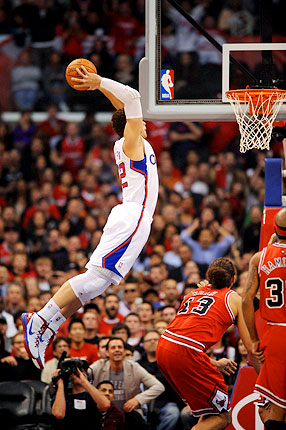As the Crossfit craze continues to grow, so does the revitalization of the olympic lifts. But should athletes (let alone the general population) perform the lifts?
That question has polarized the training community for years. I've heard arguments for and against the lifts from very intelligent coaches and learned the lifts myself first in high school, then again in college and finally last year at a USAW workshop from one of the best in the business.
However, whether or not I program them into my athletes' training plan depends entirely on their individual needs. Here are a few questions I consider:
Can the athlete perform the lifts safely? Performing the snatch, clean and jerk and their variations require significantly greater range of motion in the ankles, knees, hips, shoulders and wrists than exercises like the bench press and dead lift. If a client can perform the movements safely, then they're a viable option. If not, I may have them perform some other exercise, such as a rack pull or box squat, explosively instead.
Is it worth taking the time to teach correct technique? Olympic weightlifting is a sport in and of itself. Athletes often spend 20+ years practicing the movements before they compete in the olympic games. For example, Kendrick Farris began training when he was 12 and recently set a new American record in the 94 kg weight class with a 211kg (464 pounds) clean and jerk. His technique is a bit unorthodox, but his lifts are still thing of beauty:
As you can see, there are many different movements and significantly more technique involved than a squat, dead lift or press, which means coaches should invest additional time teaching the lifts before loading the bar. While I feel some coaches overstate the time required to teach the lifts (a good coach gets an athlete proficient in 2-3 sessions), there is a learning curve.
Is the risk worth the reward? The olympic lifts are a great way to train triple extension (fully extending the ankle, knees and hips), and improving triple extension boosts performance in all sports.
However, different sports require athletes to display speed and strength in different ways. For example, a pitcher doesn't have to display strength like a linebacker. I like using the olympic lifts with my football players because it teaches them to apply and absorb (catch) force in a way that will improve their performance on the field. Plus, many football coaches test their players in the power clean. On the other hand, baseball players display their speed and strength more laterally and rotationally, so I opt for more shoulder, elbow and wrist-friendly options like medicine ball throws, box jumps.
In summary, I love the olympic lifts and perform them myself (video below), but they're not always the best option for my athletes.
Leave a comment below and tell me what you think!
That question has polarized the training community for years. I've heard arguments for and against the lifts from very intelligent coaches and learned the lifts myself first in high school, then again in college and finally last year at a USAW workshop from one of the best in the business.
However, whether or not I program them into my athletes' training plan depends entirely on their individual needs. Here are a few questions I consider:
Can the athlete perform the lifts safely? Performing the snatch, clean and jerk and their variations require significantly greater range of motion in the ankles, knees, hips, shoulders and wrists than exercises like the bench press and dead lift. If a client can perform the movements safely, then they're a viable option. If not, I may have them perform some other exercise, such as a rack pull or box squat, explosively instead.
Is it worth taking the time to teach correct technique? Olympic weightlifting is a sport in and of itself. Athletes often spend 20+ years practicing the movements before they compete in the olympic games. For example, Kendrick Farris began training when he was 12 and recently set a new American record in the 94 kg weight class with a 211kg (464 pounds) clean and jerk. His technique is a bit unorthodox, but his lifts are still thing of beauty:
As you can see, there are many different movements and significantly more technique involved than a squat, dead lift or press, which means coaches should invest additional time teaching the lifts before loading the bar. While I feel some coaches overstate the time required to teach the lifts (a good coach gets an athlete proficient in 2-3 sessions), there is a learning curve.
Is the risk worth the reward? The olympic lifts are a great way to train triple extension (fully extending the ankle, knees and hips), and improving triple extension boosts performance in all sports.
However, different sports require athletes to display speed and strength in different ways. For example, a pitcher doesn't have to display strength like a linebacker. I like using the olympic lifts with my football players because it teaches them to apply and absorb (catch) force in a way that will improve their performance on the field. Plus, many football coaches test their players in the power clean. On the other hand, baseball players display their speed and strength more laterally and rotationally, so I opt for more shoulder, elbow and wrist-friendly options like medicine ball throws, box jumps.
In summary, I love the olympic lifts and perform them myself (video below), but they're not always the best option for my athletes.
Leave a comment below and tell me what you think!




No comments:
Post a Comment